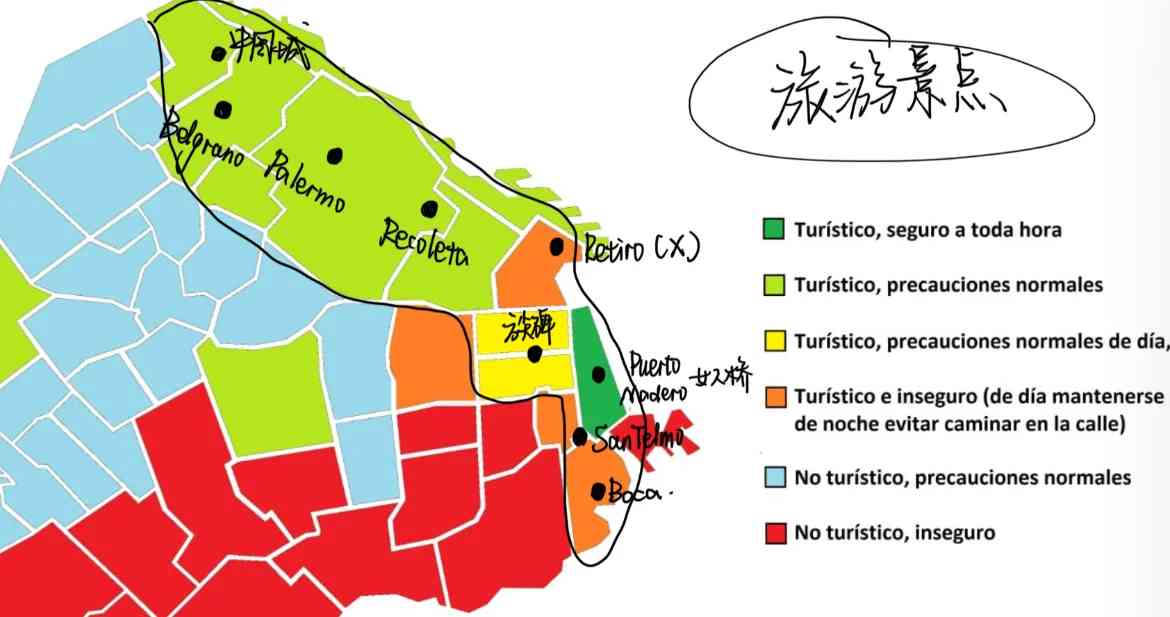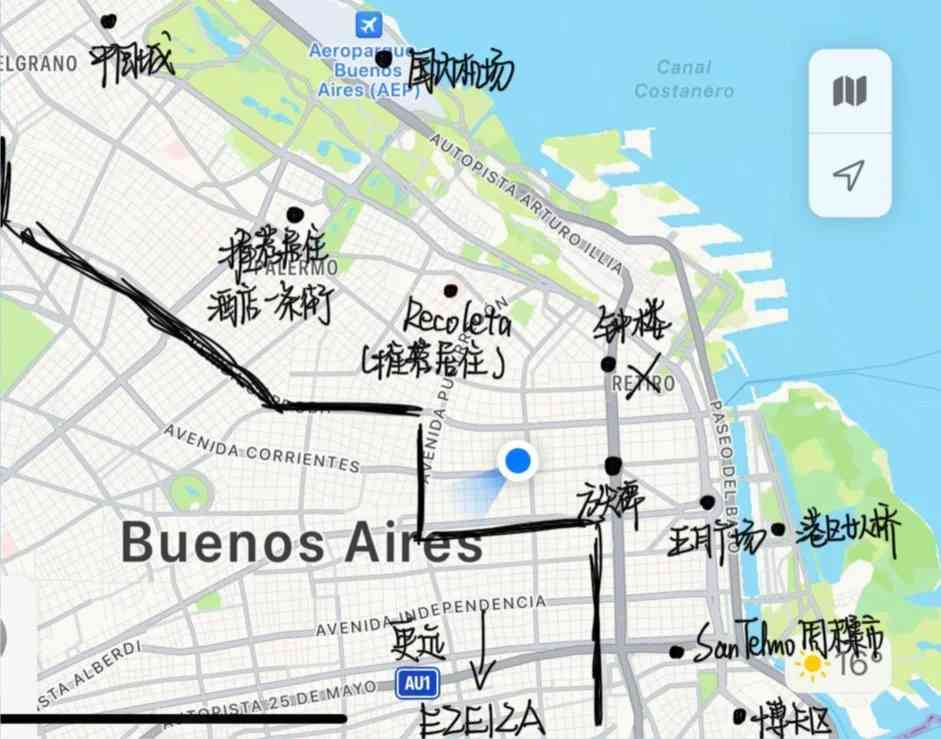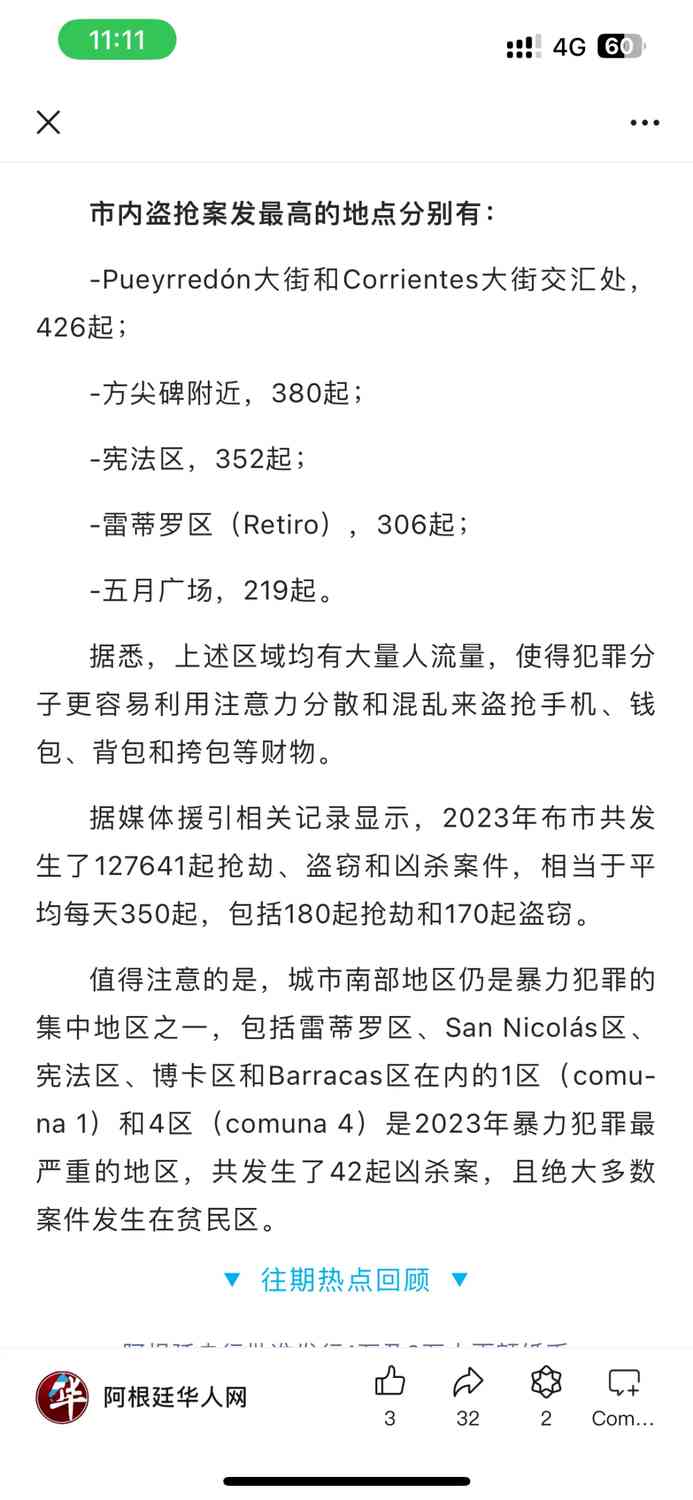Ultimate Guide to Safe Travel and Affordable Accommodation in Argentina – Must Read Tips!
❗️With over a year of experience as a tour guide in Argentina, I have an intimate understanding of the local environment and conditions. Throughout my tours, I’ve had the pleasure of meeting many courageous solo female travelers, and I deeply admire their bravery. However, I also want to emphasize that safety should always be your top priority! For those planning to explore Buenos Aires on their own without a guide, here’s a detailed look at the city’s safety landscape.

❗️Based on my firsthand experience, if you stick to the central area and avoid venturing beyond the boundaries shown in the first picture, Buenos Aires is quite safe for tourists. Compared to other cities in Argentina, the capital does have a higher concentration of impoverished and homeless individuals, making it relatively more dangerous.

In contrast, cities like Ushuaia, El Calafate, and Bariloche are much safer, where you can even use your phone on the street with peace of mind. I’ve spoken with locals who, while they have experienced theft, confirm that there is no immediate threat to life if you comply with the thieves. ⚠️It’s crucial not to resist; unlike in Brazil, where violent confrontations might occur, the incidents here are mostly petty theft.

On a safety scale of 1-10, Buenos Aires rates around a 7. There’s no need to argue or compare it to China.
❗️Starting from the right side of the first picture:
1. First, let’s explore the green area, known as the port district. This vibrant neighborhood was reclaimed from the sea and is now a thriving hub with many Chinese companies. It’s also one of the safest areas in the city.
Main attractions: Puente de la Mujer 🌉
2. Moving on to the orange area, which is a bit more rugged and less populated. This area is a bit off the beaten path and economically disadvantaged. While it’s generally safe to visit during the day, it’s best to avoid it at night.
Main attractions: San Telmo market on Sundays, La Boca stadium 🏟️, and Sur Bar (the filming location for Wong Kar-wai’s movie Tango)
3. The yellow area is the bustling heart of Argentina, home to the iconic Obelisk. This central location is a magnet for tourists due to its convenient transportation links, making it a popular choice for Chinese visitors. However, while the buildings may look luxurious, they are often quite old, and the area can be noisy, making it less than ideal for living.
The nearby clock tower and the train station, which is a melting pot of all sorts of people, including many who are less fortunate, should be approached with caution. There have been reports of phone thefts in the vicinity, so it’s best to stay vigilant. The Hilton Hotel, while visually appealing, is not recommended for an overnight stay.
Main attractions: Obelisk, Plaza de Mayo
4. ✅Highly Recommended! The green area is where many of the city’s affluent residents live. Along Avenida Libertador, you’ll find the Recoleta area, an elegant and historic neighborhood that I highly recommend for a relaxing and vacation-like experience. Further along, the Palermo area offers a more modern and vibrant atmosphere, with large parks and newer accommodations, perfect for an Airbnb stay.
Foreign tourists love this area for its lively nightlife, but be aware that thieves are also drawn to the area, so keep your wits about you.
Main attractions: Cemetery, Law School, various museums and parks
5. A quick visit to Chinatown is a must, but be extra cautious of pickpockets, as it’s no secret that Chinese travelers often carry valuables.
❤️When taking a taxi, avoid using your phone with the window open 📱, and be discreet when checking your navigation at intersections. If you ever feel unsafe, don’t hesitate to reach out to me ~ I will provide comprehensive guidance to ensure your 100% safety!

